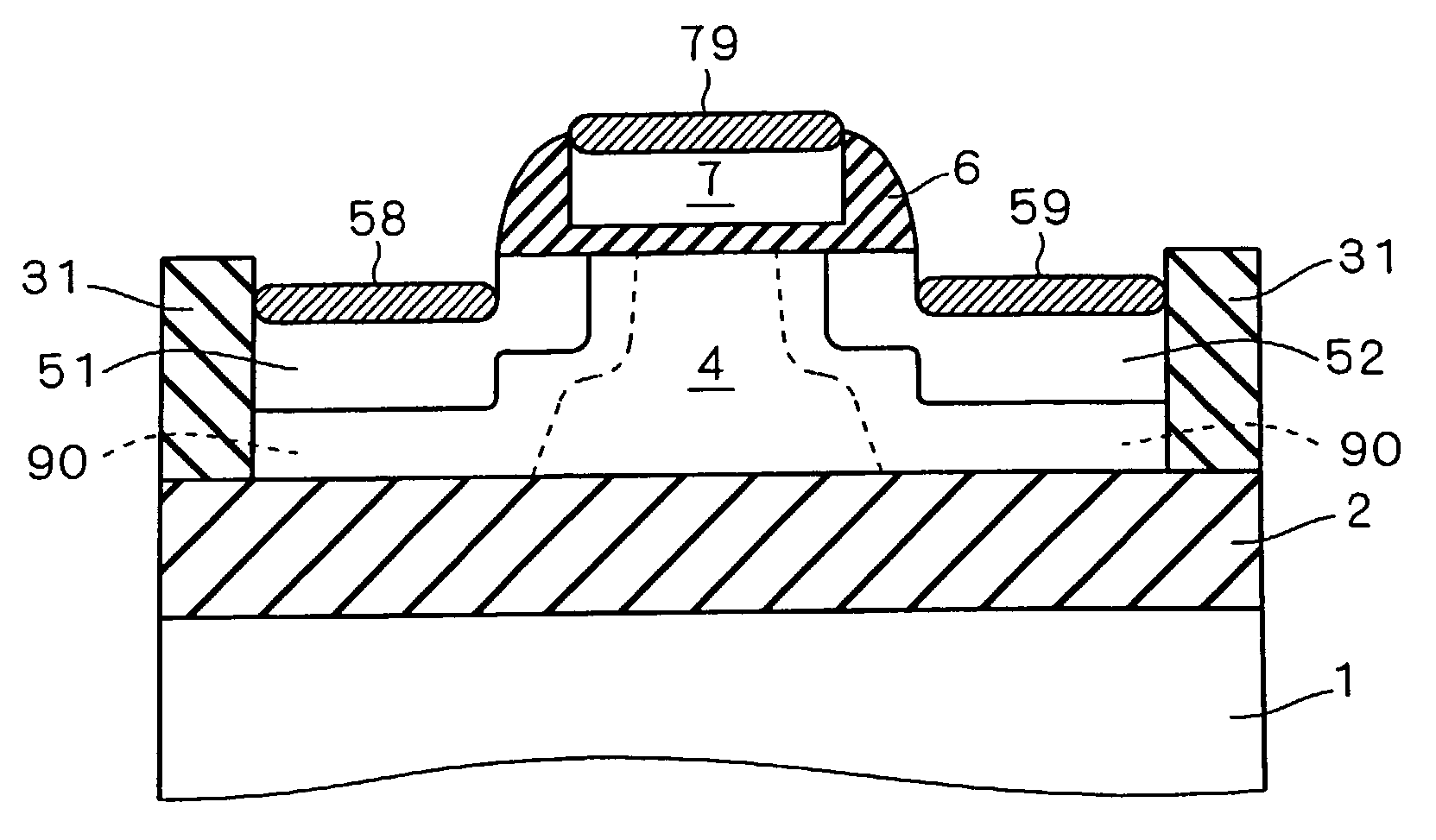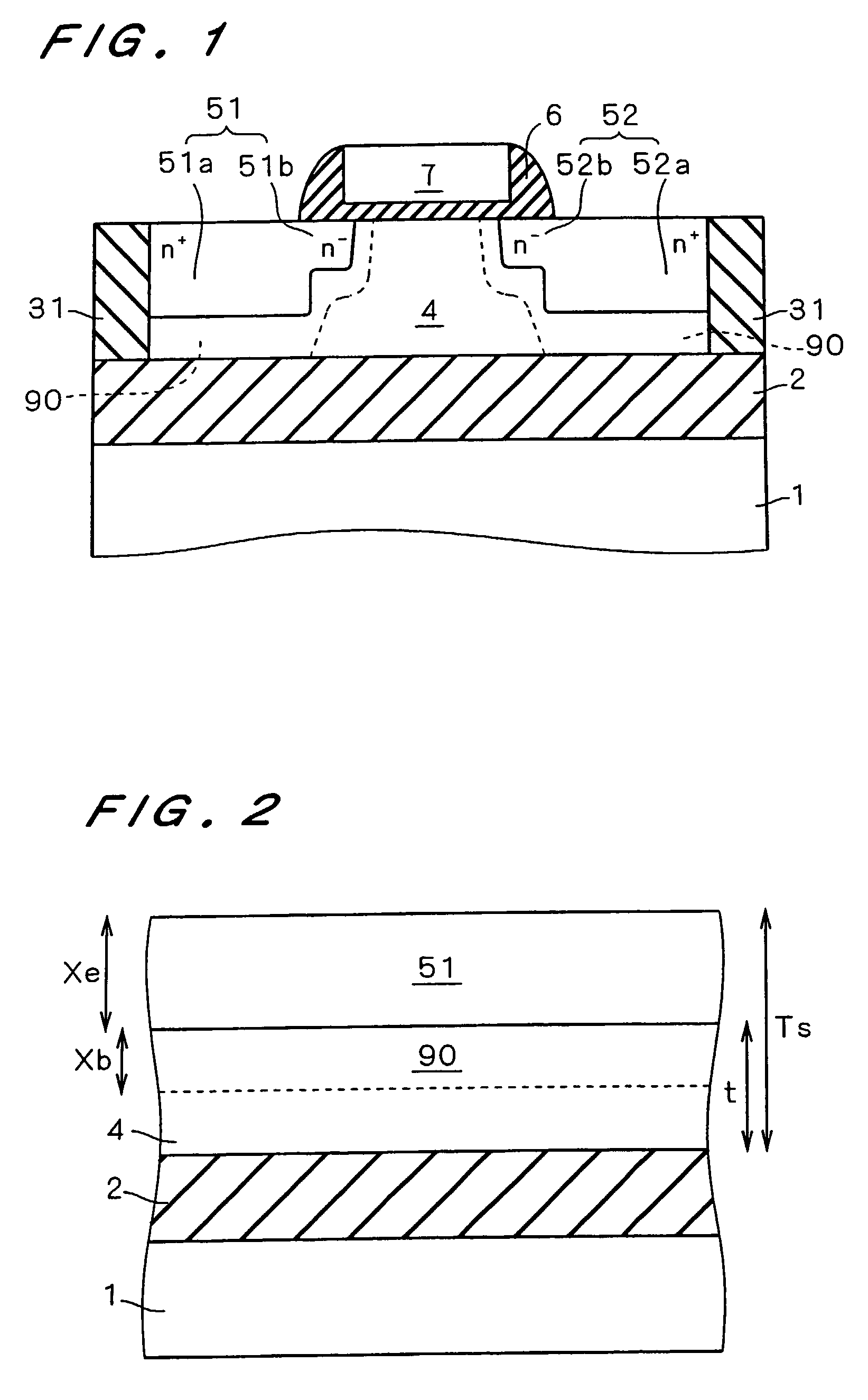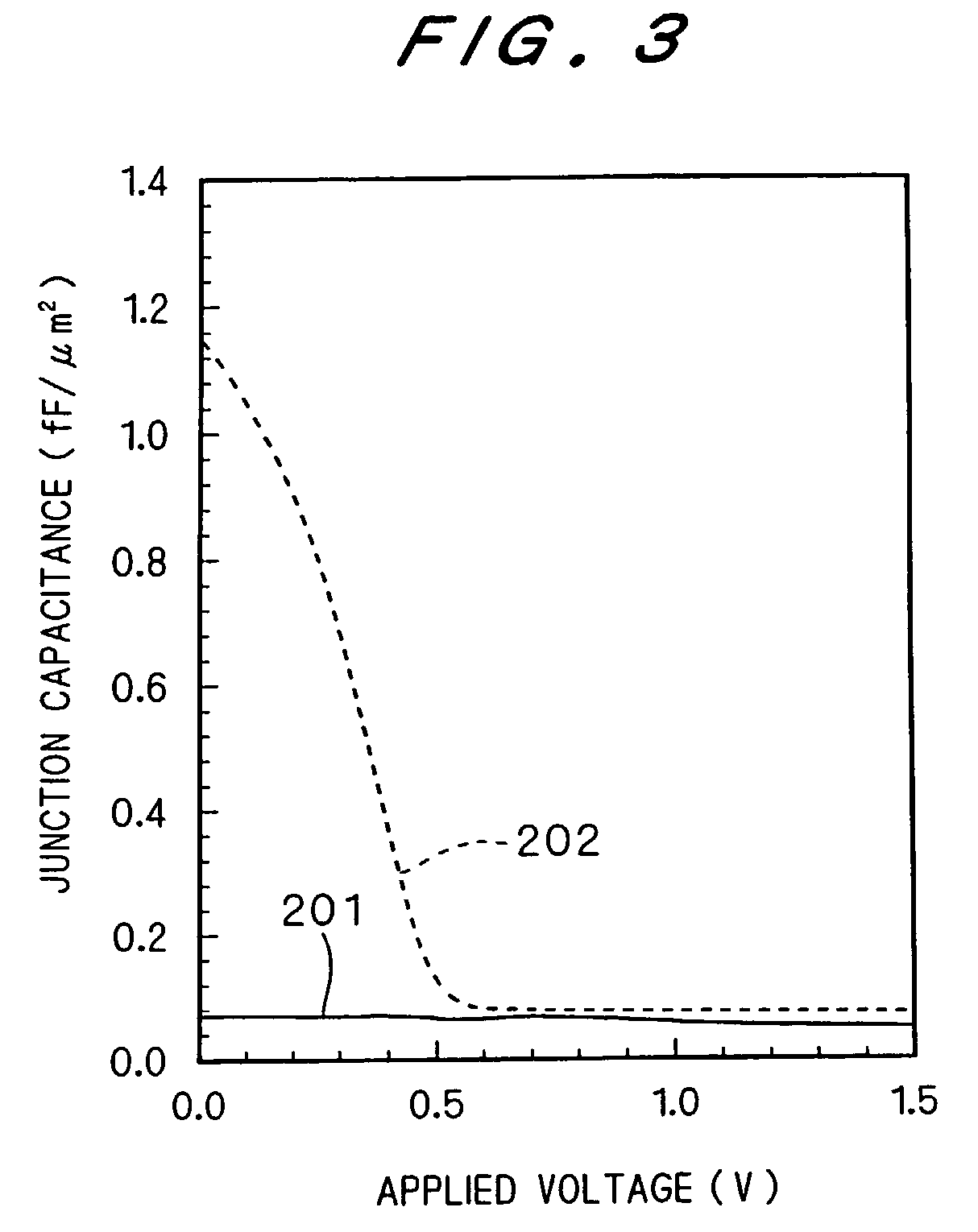Semiconductor device with semiconductor layer having various thickness
a semiconductor device and semiconductor layer technology, applied in the direction of semiconductor devices, electrical devices, transistors, etc., can solve the problems of reducing the drain breakdown voltage, the impracticability of suppressing the “diffraction electric field” still remains, and the area penalty, so as to enhance the effect of the semiconductor device, suppress the parasitic bipolar effect, and reduce the thickness of the first impurity layer
- Summary
- Abstract
- Description
- Claims
- Application Information
AI Technical Summary
Benefits of technology
Problems solved by technology
Method used
Image
Examples
first preferred embodiment
[0055]FIG. 1 is a cross-sectional view showing the structure of an SOIMOS transistor according to a first preferred embodiment of the present invention. On a buried oxide film 2 formed on a p-type semiconductor substrate 1 made for example of silicon, an SOI layer 4, which is to be a body along with a channel region, is formed and an n-type source 51 and an n-type drain 52 are formed in the surface of the SOI layer 4 on the opposite side of the buried oxide film 2. The bottoms of the respective source and drain 51, 52 are kept from contact with the buried oxide film 2. For example, the source 51 and the drain 52 have LDD (Lightly-doped Drain) structures; more specifically, the source 51 includes a region 51a with high impurity concentration and a region 51b with low impurity concentration, while the drain 52 includes a region 52a with high impurity concentration and a region 52b with low impurity concentration.
[0056]The SOI layer 4 sandwitched between the source 51 and the drain 52 ...
second preferred embodiment
[0067]By introducing lifetime killers to the structure of the first preferred embodiment the effect of the first conventional technique can further be enhanced. FIG. 5 is a cross-sectional view showing the structure of an SOIMOS transistor according to a second preferred embodiment. This structure is characteristically different from the structure of FIG. 1 in that lifetime killers 54 are introduced into the SOI layer 4 between the buried oxide film 2 and the source and drain 51, 52. In the second preferred embodiment, the relations between the equations (1) to (3) should preferably be maintained but it is not an absolute necessity.
[0068]When the thickness Ts of the SOI layer 4 is 1,000 Å, for example, the source 51 and the drain 52 are formed by implanting arsenic ions into the SOI layer 4 at an energy of 20 keV or less so that they are kept from contact with the buried oxide film 2. After the formation of the source 51 and the drain 52, argon ions are implanted at an angle of 30 d...
third preferred embodiment
[0076]FIG. 6 is a cross-sectional view showing the structure of an SOIMOS transistor according to a third preferred embodiment of the present invention. This structure is characteristically different from that of FIG. 1 in that metal compound layers, e.g., silicide layers 58, 59, 79, are formed on the source 51, the drain 52, and the gate electrode 7, respectively. In the third preferred embodiment, the relations between the equations (1) to (3) should preferably be maintained but it is not an absolute necessity.
[0077]When the bottoms of the source 51 and the drain 52 are kept from contact with the buried oxide film 2 as in the first preferred embodiment, the formation of the silicide layers 58 and 79 produces lifetime killers as in the second preferred embodiment. That is, it is considered that crystal defects, crystal distortion, point defects, and recombination centers are produced by silicidation. Thus, the same effect as in the second preferred embodiment can be obtained. Areas...
PUM
 Login to View More
Login to View More Abstract
Description
Claims
Application Information
 Login to View More
Login to View More - R&D
- Intellectual Property
- Life Sciences
- Materials
- Tech Scout
- Unparalleled Data Quality
- Higher Quality Content
- 60% Fewer Hallucinations
Browse by: Latest US Patents, China's latest patents, Technical Efficacy Thesaurus, Application Domain, Technology Topic, Popular Technical Reports.
© 2025 PatSnap. All rights reserved.Legal|Privacy policy|Modern Slavery Act Transparency Statement|Sitemap|About US| Contact US: help@patsnap.com



